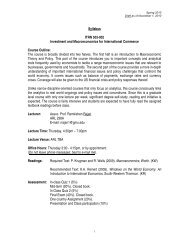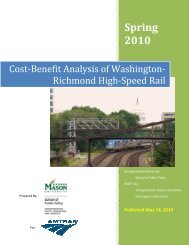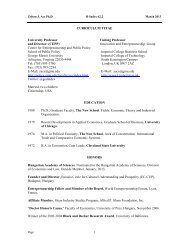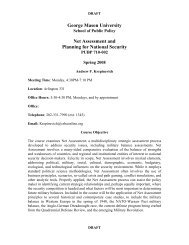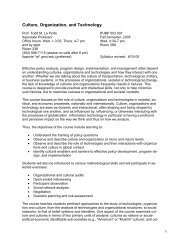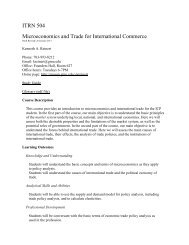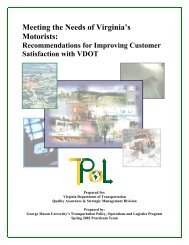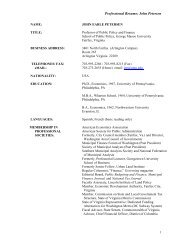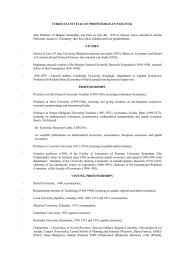Coordinating critical transportation infrastructure vulnerability
Coordinating critical transportation infrastructure vulnerability
Coordinating critical transportation infrastructure vulnerability
You also want an ePaper? Increase the reach of your titles
YUMPU automatically turns print PDFs into web optimized ePapers that Google loves.
R-ESF #7: Resource Support—facilitates communication and support among regional<br />
jurisdictions to assist in the effective and timely coordination of resources following an<br />
emergency.<br />
R-ESF #8: Health, Mental Health, and Medical Services—facilitates communication,<br />
cooperation, and coordination among local and state jurisdictions and a vast array of<br />
hospitals, social workers, and private-practice physicians concerning regional health, mental<br />
health, and medical services issues and activities.<br />
R-ESF #9: Technical Rescue—R-ESFs #4, #9, and #10 are structurally the same and are<br />
all contained in R-ESF #4.<br />
R-ESF #10: Hazardous Materials—R-ESFs #4, #9, and #10 are structurally the same<br />
and are all contained in R-ESF #4.<br />
R-ESF #11: Food—facilitates the procurement, storage, <strong>transportation</strong>, and distribution of<br />
food provisions and food stamps and also feeding assistance. R-ESF #11 works in<br />
conjunction with and in continuance of the mass-feeding activities performed under R-ESF<br />
#6: Mass Care.<br />
R-ESF # 12: Energy—ensures an effective and timely response to public emergencies that<br />
affect the regional energy <strong>infrastructure</strong> (including the supply and delivery of electricity,<br />
natural gas, and petroleum fuels).<br />
R-ESF #13: Law Enforcement—facilitates communication and information coordination<br />
among regional jurisdictions concerning law enforcement issues and activities.<br />
R-ESF #14: Media Relations and Communications Outreach—provides accurate,<br />
authoritative, and timely regional information to news media representatives, thereby<br />
supporting other regional partners as they work to protect the health and safety of citizens.<br />
R-ESF #15: Donations and Volunteer Management—facilitates the communications<br />
and coordination among regional jurisdictions and agencies regarding the need for and<br />
availability of donations and volunteer services.<br />
4.3 SUPPORT ANNEXES<br />
To augment the RICCS, 11 Support Annexes will provide detailed information on specific topics.<br />
The Support Annexes include descriptive briefs on the following: 20<br />
(1) Animal Protection—lists the governmental, private sector, and nongovernmental<br />
agencies involved; the need and purpose for this function; the situations and conditions for<br />
this function; the planning assumptions, the coordination capability; and the responsibilities<br />
of the participant organizations.<br />
20 Ibid, page Executive Summary, pages 5-6.<br />
PUBP 710/722 Page 19 of 60<br />
WMATA Case Study June 5, 2003



